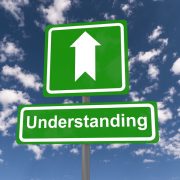How Exactly Does a Self-Directed Checkbook IRA Work, Anyway?
If you have heard of the term “Checkbook IRA,” you may have found yourself intrigued by the possibility of retirement investing made so easy that you can take out a checkbook to make your investments. But how is it possible in the first place? What are the internal mechanisms that make it possible to open a so-called “Self-Directed Checkbook IRA,” and how will you know when you have established one the proper way? Here’s what you will need to know.
How a Self-Directed Checkbook IRA Works
Let’s be clear: there is no official distinction by the IRS of a “Checkbook IRA”—at least, not in the same way a Solo 401(k) plan is differentiated from a Traditional IRA. Instead, a Checkbook IRA simply refers to having a Self-Directed IRA. In this unique arrangement, an investor will create a Single Member LLC. The IRA then holds ownership of this LLC. Because the investor controls the IRA, they then have control over the checkbook of the LLC.
Also known as a Single Member IRA LLC, this arrangement means that your retirement account purchases 100% of the LLC. You can then use that LLC’s checkbook to make purchases of assets, control investments, and write checks on behalf of the LLC.
The structure places a Single Member LLC under the umbrella of the IRA, which in turn is held by you, the investor. While it may seem like a strange way to arrange an LLC, the purposes are for retirement investing. You can make non-traditional retirement investments with a Single Member LLC IRA because you’re using a Self-Directed IRA to control it. This opens possibilities of investing beyond the stock market—an LLC can purchase real estate, for example. That real estate is then held within the IRA, protecting those assets from the tax burden associated with personal accounts.
Why Do People Choose Self-Directed Checkbook IRAs?
As you might imagine, the process for establishing a Self-Directed Checkbook IRA is a bit complicated, which is why people turn to firms to handle the paperwork required, for example, to establish the Single Member LLC. Doing so on your own can be very precarious—after all, with this amount of freedom comes the responsibility of meeting your own tax obligations. It helps to involve experts who can advise you about the paperwork.
But people choose Self-Directed Checkbook IRAs because once they are set up, they allow for tremendous retirement investing freedom. True, you cannot use the Checkbook IRA in any way you would use a regular IRA. For example, you would not be cutting checks to your spouse from your IRA. This would be transacting with a “disqualified person,” which is prohibited by the IRS.
Beyond the freedom the Self-Directed Checkbook IRA gives the investor, there are other reasons an individual might choose to go this route:
- With Checkbook Control, an investor has tremendous leeway in retirement investing, so long as they adhere to the IRS retirement investing rules.
- Contributing to an IRA typically involves a few steps—contributions, for example, before making a purchase within the IRA. With a Self-Directed Checkbook IRA, the ease of use makes it feel much more like natural investing.
- Higher set-up, but lower maintenance fees. The Checkbook IRA does have higher fees at setup—thanks to all that paperwork—but it means lower ongoing fees. That means for investors who have the money right away, it can be an attractive option for long-term retirement growth.
A Checkbook IRA can sometimes feel like a “shortcut” to making retirement investing work for you. But it requires proper set-up and due diligence to ensure you pull it off without a hitch.
Interested in learning more about Self-Directed IRAs? Contact American IRA, LLC at 866-7500-IRA (472) for a free consultation. Download our free guides or visit us online at www.AmericanIRA.com.








